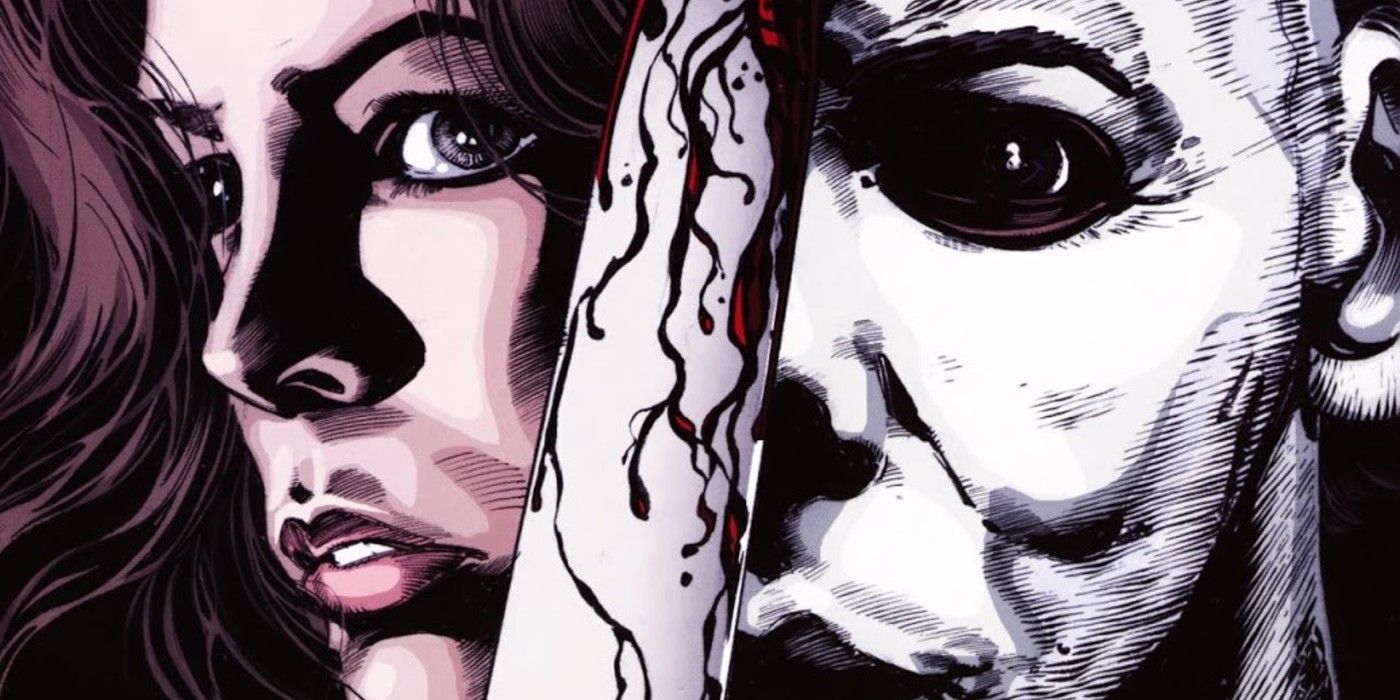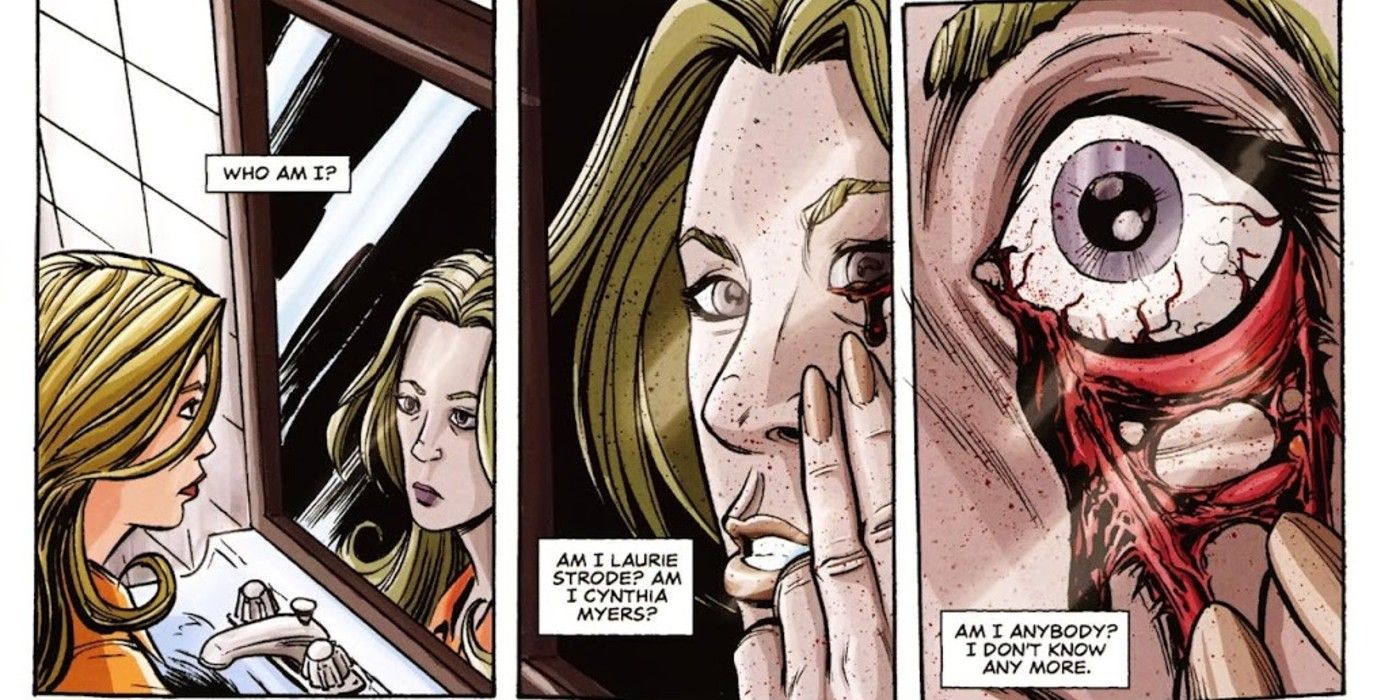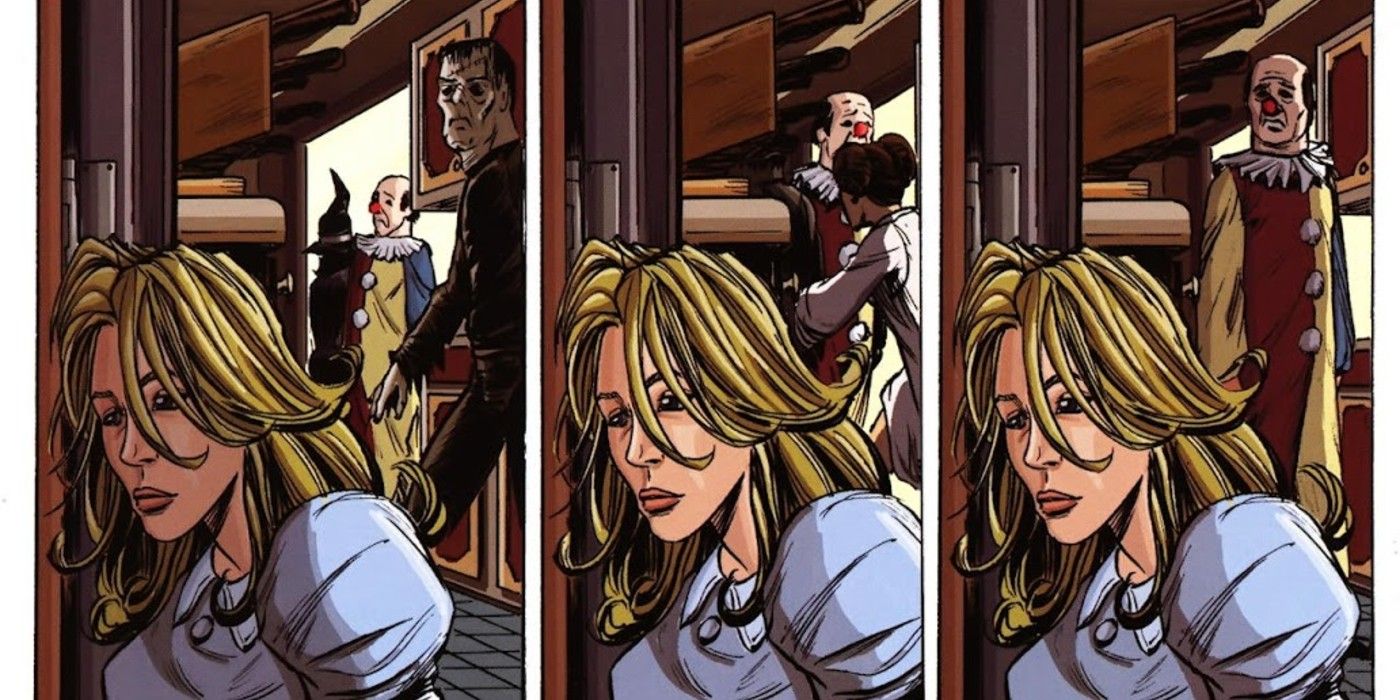
Changing Jamie Lee Curtis' Laurie Strode from a random victim of Michael Myers to the killer's sister is probably the most divisive retcon in Halloween history, but one little known comic book series capitalized on that familial angle better than any of the film sequels ever did. Halloween II introduced the "sibling twist" to audiences in 1981, providing a reason for Michael's obsession with Laurie where there was none to be found in the original. However, where the many on-screen sequels failed to make a compelling case for explaining Michael's evil, the comics succeeded.
While it's true that assigning a clear motive to Michael's killings diminishes the mystique that made the slasher so scary in the first place, Halloween II at least attempted to use the sibling twist as a tool for expanding upon the metaphor of the ever-present shape. Picking up right where the original movie left off, Halloween II tracks Laurie Strode as she's taken to Haddonfield Memorial Hospital where repressed memories of her adoption begin bubbling to the surface. Here, Michael is depicted as the unstoppable, incessant nightmare that refuses to be forgotten. However, Laurie is never truly forced to face the trauma of this sibling revelation in any impactful way before the end, making it feel more like a convoluted excuse to justify Michael's continued desire to kill her than a compelling narrative twist. Thankfully, one comic book sequel managed to make up for Halloween II's shortcomings in this regard.
2009's Halloween: The First Death of Laurie Strode by Stefan Hutchinson and Jeff Zornow provides an in-depth look at Laurie's psychology in the months following the events of Halloween and Halloween II. Given that every sequel in the Halloween II timeline takes place ten years or more after Michael's initial 1978 rampage, it's a novel but welcome idea for a sequel to take a breath and explore the heavy toll that fateful night took on Laurie. As Laurie bears through her friends' funerals, she can't shake the lingering feeling of Michael's presence all around her. And given that his body was never discovered in the rubble of the explosion at the end of Halloween II, she's certainly on to something, despite the fact that the rest of Haddonfield prefers to deny the possibility that Michael still lives.

Most intriguing of all is how First Death delves even deeper into the 'subconscious nightmare' theme of Halloween II, providing far more depth than was originally there. Not only is Laurie dealing with the trauma of being the sole survivor of a psychotic killer's murderous frenzy, she's also processing the discovery that she's the killer's sister and that her parents kept her adoption a secret all along. While the rest of Haddonfield wants nothing more than to move on from the horror of Michael Myers, Laurie can't forget, so she resorts to drug abuse as a means to escape her trauma. But the more she tries to bottle up the dreadful truth, the more powerful the shape becomes.
As Laurie numbs herself with excessive drug use, Michael returns to kill her at her weakest and most vulnerable. A cat and mouse chase ensues just as Laurie's most suppressed childhood memories return to her. She recalls her adoptive father abusing her for even mentioning the name Michael Myers, causing her to bury the memory of her blood brother and the physical harm that accompanied acknowledging his existence deep within the recesses of her mind. First Death builds upon Halloween II's alluring concept of 'the forgotten memory' by making Michael the embodiment of Laurie's childhood trauma, delivering a far more powerful and character-driven tale of horror.

Unfortunately this miniseries was discontinued just before the third and final issue's release, so fans were never provided a proper conclusion. Though, given the story's title, it surly would have ended with Laurie escaping Michael and starting a new life through the witness protection program under the guise of Keri Tate, acting as the connective narrative tissue between Halloween II and H20. Despite its missing final issue, The First Death of Laurie Strode explores the darkness of the shape under a fascinating new lens, and in doing so, makes a compelling case for Laurie Strode as Michael Myers' sister.
from ScreenRant - Feed https://ift.tt/3EqVbaM


0 Comments